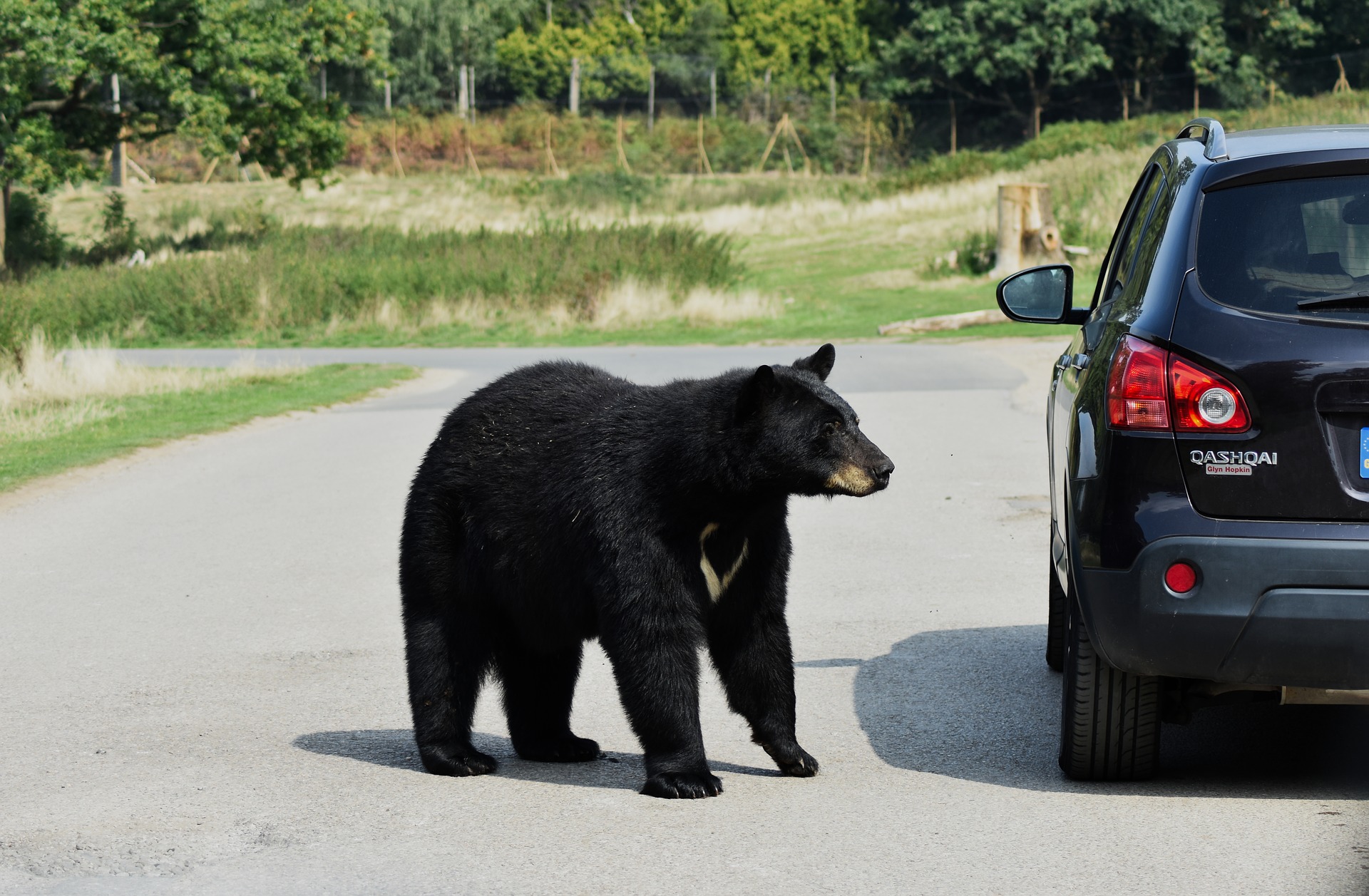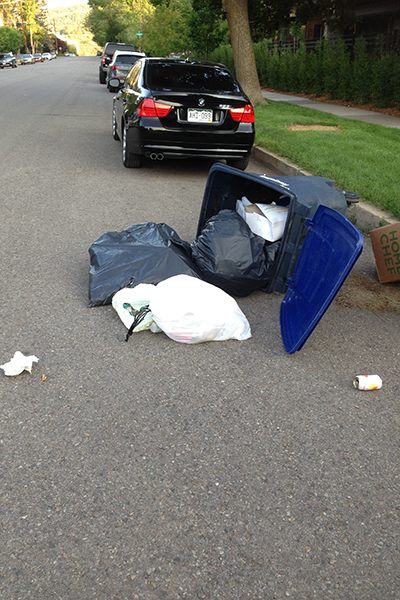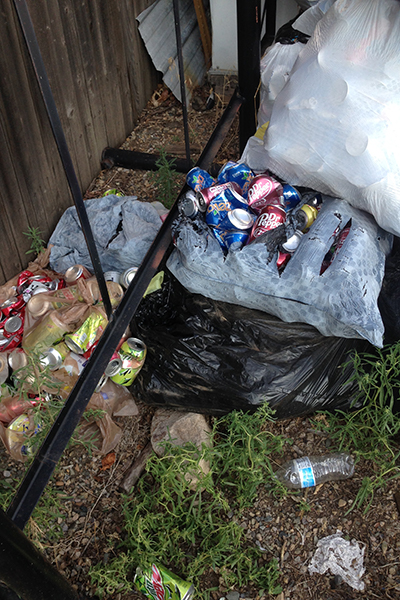
The Centennial State is a popular destination for nature and adventure enthusiasts. Colorado’s unique mountainous landscape and outdoor recreation allow visitors to glimpse the world from the peaks and get a taste of the wilderness lifestyle. The state is home to an abundance of wildlife, including black bears.
Black bears are native to Colorado, and with sustained human population increase over the last several decades, wildlife managers have increasingly encountered black bear-human conflicts in urban areas. Conflict in cities can result when black bears gain access to unsecured trash, bird feeders, chicken coops and vehicles.
While there have only been four documented human deaths caused by black bears in the state since 1971, nuisance encounters frequently occur. Colorado Parks and Wildlife has developed campaigns to remind urban residents to prevent conflict with black bears, but the agency continues to receive reports of human-bear conflicts throughout the state every year.
Researchers at Colorado State University’s Center for Human-Carnivore Coexistence have recently evaluated the degree to which bear-resistant trash containers have reduced human-bear conflict in Durango, a community in southwest Colorado that regularly experiences high rates of conflict with bears.
Center for Human-Carnivore Coexistence works to address a One Health Issue
“We’re working to reduce conflict and promote coexistence between humans and carnivores like black bears,” said Kevin Crooks, director of the center and professor in the Department of Fish, Wildlife, and Conservation Biology at CSU. “Successful coexistence means supporting sustainable carnivore populations and thriving human livelihoods with minimal conflict.”
The center aims to understand how best to reduce conflict with bears by restricting human food sources that attract bears to urban areas. This problem is exacerbated during periods of drought or because of late spring freezes, both of which limit their natural food sources.
“Bears are keying off of what people do, such as not securing their trash, and responding to it in ways that impact their population and behavior,” said Stewart Breck, a carnivore ecologist for the USDA – Wildlife Services’ National Wildlife Research Center and principal investigator of the project. “As a result, people are responding to what the bears are doing, and it can become a negative feedback cycle that results in negative outcomes for both bears and people.”
Human-animal interactions are a key study area for the CSU’s One Health Institute which helped to fund CHCC work in this area. One Health is the concept that the health of humans, animals, and the wider environment are closely linked and interdependent.
The human-black bear conflict is a One Health issue, as black bears are responding to environmental conditions by seeking food sources from humans, causing conflict. Approaching the issue through a One Health lens helps researchers find solutions that benefit the health of humans and black bears, particularly when natural food sources for bears are scarce.
Securing trash protects humans and bears


When black bears are drawn into urban areas, interactions with humans become more common. Bears also experience a higher mortality rate due to the potential for vehicle collisions, property damage, and conflict that leads to their lethal removal. In 2020 alone, 120 bears were euthanized statewide due to human conflict.
“Bears in Colorado have a two-strike rule when it comes to causing a conflict,” said Cassandre Venumière-Lefebvre, a Ph.D. student in the Crooks Laboratory who is studying human-black bear conflict in Durango. “When a bear is caught causing any form of conflict with humans, they are tagged and relocated upon their first offense. When a tagged bear causes a second documented conflict, they are euthanized.”
In rare instances of significant conflict, bears are euthanized on the first offense. The issue made headlines in Durango last summer when a female bear and her two cubs killed a 39-year-old woman walking her dogs. As a result, the three bears were euthanized upon capture.
Evaluation of self-locking containers to reduce black-bear conflict

Durango is a hotspot for black bear activity due to the ideal bear habitat that surrounds the city. Studies in Durango conducted by Colorado Parks and Wildlife, the National Wildlife Research Center, and CSU from 2011 to 2016 found that manually locking trash containers helped reduce conflict, but that such containers often were not properly secured by users. Residents often failed to latch both clips on the containers, allowing bears to continue to access the trash.
There is significant potential for decreasing human-black bear conflict with effective trash management, but this is dependent upon human compliance with Durango city ordinances requiring bear-proofing trash. In 2018 and 2019, the city distributed fully automated (self-locking) trash containers to those residents that had not previously received the manually locking containers in the prior study.
Following the deployment of the automatic containers, Cassandre Venumière-Lefebvre temporarily relocated to Durango in the summer of 2021 to investigate the effectiveness of the different types of trash cans in mitigating black bear conflict. Cassandre moved to Colorado from France for her Ph.D. and found her passion in studying carnivores.
Her study focused on human compliance with the trash ordinance, types of trash containers, and how they were used throughout the city. She also counted the number of attempts – both successful and failed- by bears and other wildlife to access the containers. Out of 2048 trash containers used by residents in the study area, 98.4% were bear-resistant, and 1.6% were regular containers. Of the bear-resistant containers, 65.5% were automatically locking and 32.8% latched manually. During the 2021 season, 151 occurrences of potential conflict – trash containers knocked over — were recorded. Out of these occurrences, 60.3% were failed attempts (containers knocked over but no trash spilled) and 39.7% were “conflicts” resulting in spilled trash.
These results demonstrate that the use of the new automatically locking containers increased resident compliance in securing trash and reduced the ability of bears to access it. The conflict rate in 2021 was significantly lower than in previous years. Consequently, researchers were able to conclude that the automatic containers significantly improved resident compliance with the trash ordinance, therefore reducing the potential for human-bear conflict in Durango.
“The most important thing people can do to address the issue is engage with their city leaders and help encourage communities to make substantial waste management changes to reduce the amount of garbage available to bears,” Breck said. “Without community support from all citizens and businesses, we are not going to solve the issue.”
Wildlife managers and city officials throughout Colorado, and the Rocky Mountain West, can continue to use the findings from this study to make decisions that benefit humans, black bears, and their environment. By informing residents of harsh environmental conditions and providing automatically locking containers, there is a higher likelihood of reducing conflict with black bears as they prepare to hibernate in the coming seasons.